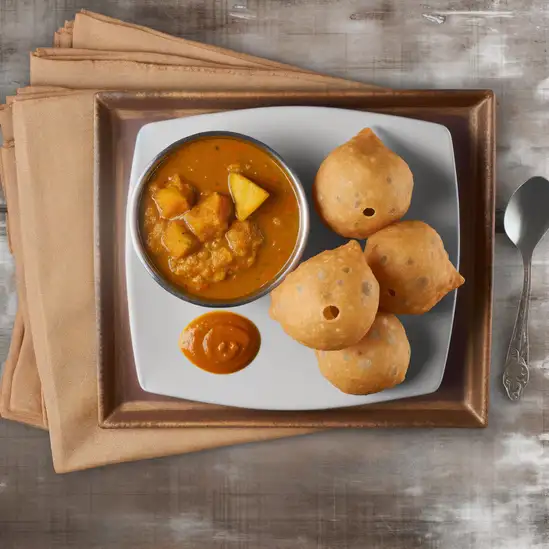



If you ever find yourself wandering through the heart of India,Prayagraj (formerly Allahabad) is a place that quietly pulls you in with its soulful energy. There’s this timeless rhythm here,where ancient traditions hum alongside the everyday bustle of city life. Imagine standing at the confluence of the Ganges,Yamuna,and the mythical Saraswati rivers—the Triveni Sangam—where the water seems to carry stories of centuries past. The air carries a mix of incense,fresh river breeze,and the faint aroma of street food stalls sizzling with local spices. Walking through the old city streets,you’ll hear the chatter of vendors,the distant call of temple bells,and the occasional laughter of children playing near the ghats. The architecture is a fascinating blend—colonial buildings standing shoulder to shoulder with vibrant temples and bustling markets. It’s a place where history isn’t just in books; it’s alive in the faces of the people,the festivals,and the rituals that unfold daily. Don’t miss trying the local delicacies—imagine biting into a crispy kachori or savoring a sweet,syrupy peda while sipping on chai brewed just right. The warmth of the people here is as inviting as the city itself; they’re proud of their heritage and eager to share stories about the city’s role in India’s spiritual and political tapestry. Visiting Prayagraj feels like stepping into a living,breathing mosaic of culture and devotion that stays with you long after you leave.
The information on this page is currently being reviewed by Tripkliq and should be used as a guide only
Eng word: Hello
Eng pronunciation: Namaste
Local language: नमस्ते
Eng word: Goodbye
Eng pronunciation: Alvida
Local language: अलविदा
Eng word: Thank you
Eng pronunciation: Dhanyavaad
Local language: धन्यवाद
Eng word: How much
Eng pronunciation: Kitna
Local language: कितना
Eng word: Toilet
Eng pronunciation: Shauchalay
Local language: शौचालय
Eng word: Help me
Eng pronunciation: Meri madad karo
Local language: मेरी मदद करो
Eng word: Yes
Eng pronunciation: Haan
Local language: हाँ
Eng word: No
Eng pronunciation: Nahi
Local language: नहीं
Eng word: Excuse me
Eng pronunciation: Maaf kijiye
Local language: माफ़ कीजिये
Prayagraj, historically known as Prayag, is one of the oldest cities in India, with references dating back to ancient Hindu scriptures like the Vedas and the Mahabharata.
Prayagraj is famous for the Triveni Sangam, the confluence of three rivers:the Ganges, the Yamuna, and the mythical Saraswati. This confluence is considered one of the holiest places in Hinduism.
Prayagraj hosts the Kumbh Mela, the largest religious gathering in the world, every 12 years. Millions of pilgrims from around the globe come to take a holy dip at the Triveni Sangam.
The Allahabad Fort, built by Emperor Akbar in 1583, is a magnificent example of Mughal architecture. It houses the Ashoka Pillar, Saraswati Koop, and Patalpuri Temple.
The Ashoka Pillar, located within the Allahabad Fort, dates back to the 3rd century BCE. It bears inscriptions from Emperor Ashoka and later inscriptions from Emperor Samudragupta.
Anand Bhavan is the ancestral home of the Nehru-Gandhi family. It has been converted into a museum showcasing the life and times of India's first Prime Minister, Jawaharlal Nehru.
All Saints Cathedral, also known as Patthar Girja, is a beautiful Anglican cathedral built in the Gothic Revival style. It was consecrated in 1887 and is a prominent landmark in the city.
Founded in 1887, Allahabad University is one of the oldest and most prestigious universities in India. It has produced many notable alumni, including several Indian Prime Ministers.
Swaraj Bhavan, originally known as Anand Bhavan, was donated by Motilal Nehru to the Indian National Congress. It served as the headquarters of the Congress party during the Indian independence movement.
In Prayagraj (Allahabad), the most common Power Adaptor is Type C, Type D, Type M.







A fragrant rice dish cooked with marinated meat or vegetables, spices, and saffron, often served during special occasions.

Spiced potato patties that are shallow-fried and often served with chutneys and yogurt, a popular street food item.

A popular snack made of a crispy pastry filled with spiced potatoes and peas, often served with chutney.

A refreshing yogurt-based drink, often flavored with fruits or spices, perfect for cooling down in the hot weather.

A popular breakfast dish consisting of spicy, deep-fried kachoris served with a tangy potato curry.

A variety of savory snacks, often made with potatoes, chickpeas, and tangy chutneys, served as a street food favorite.

Deep-fried bread (puri) served with a spiced potato curry (bhaji), commonly enjoyed for breakfast or as a snack.

A famous Bengali sweet made from soft, spongy balls of chhena (fresh cheese) soaked in sugar syrup, enjoyed as a dessert.
If you ever find yourself wandering through Varanasi,get ready to step into a world where time feels both ancient and alive. The moment you arrive,there’s this unmistakable hum—a mix of temple bells,chanting voices,and the gentle lapping of the Ganges—that wraps around you like a warm,familiar blanket. It’s a city that pulses with spirituality and everyday life all at once,where the sacred and the ordinary dance side by side.
Walking along the ghats at dawn is something else entirely. The air is thick with the scent of incense and marigold flowers,mingling with the earthy aroma of the river. You’ll see locals performing their morning rituals,dipping into the water,and offering prayers,while boats glide silently by,their oars slicing through the mist. The colors here are vivid—the saffron robes of monks,the bright saris of women,and the flickering flames of countless diyas floating downstream.
Varanasi’s streets are a sensory overload in the best way:the sizzle of street food stalls selling spicy chaat,the chatter of vendors bargaining,and the occasional stray cow weaving through the crowd. It’s a place that invites you to slow down,soak in its layers of history and devotion,and maybe even find a little peace amid the chaos. Trust me,once you’ve experienced Varanasi,it stays with you—like a story you want to tell over and over.
Imagine stepping into a city that pulses with energy,where every street corner hums with life and stories waiting to be discovered—that’s Mumbai for you. The moment you arrive,you’re wrapped in a vibrant tapestry of sounds:the rhythmic clatter of local trains,the lively chatter of street vendors,and the distant call of temple bells blending with honking rickshaws. The air carries a mix of spices from roadside stalls,mingling with the salty breeze from the Arabian Sea,creating an intoxicating scent that’s uniquely Mumbai.
Walking through its bustling lanes,you’ll see a kaleidoscope of colors—bright saris fluttering in the wind,intricate colonial architecture standing proudly beside sleek skyscrapers,and street art that tells tales of the city’s soul. Mumbai’s character is a beautiful contradiction:it’s fast-paced yet welcoming,chaotic yet deeply rooted in tradition. The city’s heartbeat is its people—dreamers,artists,and entrepreneurs who wear their resilience and warmth like a badge of honor.
And then there’s the food—oh,the food! From the tangy,spicy street-side vada pav that feels like a warm hug,to the rich,aromatic biryanis and fresh seafood by the sea,every bite is a celebration of flavors. Mumbai invites you to lose yourself in its maze of neighborhoods,each with its own rhythm and charm,promising moments of surprise and connection. It’s not just a place to visit; it’s a city that stays with you long after you’ve left.
Kolkata feels like stepping into a living,breathing storybook where every street hums with history and heart. The city’s energy is a warm,bustling embrace—chaotic yet comforting,like a favorite old song you didn’t know you loved until you heard it live. Walking through its crowded lanes,you’ll catch the scent of freshly fried kachoris mingling with the earthy aroma of monsoon-soaked earth,while the distant clang of tram bells and the chatter of vendors create a lively soundtrack.
What makes Kolkata truly unforgettable is its soul—deeply intellectual yet wildly creative. It’s a place where poets and artists have left their mark on every corner,from the colonial-era architecture to the vibrant street art. The city pulses with a love for literature,theater,and music,and you can feel it in the air,especially during evenings when cafés fill with animated conversations and the aroma of strong chai.
Don’t miss the chance to savor authentic Bengali sweets like rosogolla and sandesh,or to sit by the Hooghly River as the sun sets,watching ferries drift lazily by. Kolkata’s charm lies in its contradictions—old and new,noisy and serene,simple and sophisticated—all woven together with a warmth that invites you to slow down and soak it all in. Trust me,once you’ve wandered its streets and tasted its flavors,Kolkata stays with you long after you leave.
If you ever find yourself craving a place where the ocean breeze carries stories of adventure and the rhythm of waves sets your pace,Port Blair is where you want to be. This city feels like a gentle invitation to slow down and soak in the raw beauty of island life. The moment you step off the ferry or plane,the salty air mingled with the scent of tropical flowers wraps around you like a warm hug. Palm trees sway lazily against a backdrop of turquoise waters,and the chatter of locals blends with the distant call of seabirds,creating a soundtrack that’s both lively and soothing.
Port Blair isn’t just a gateway to the Andaman Islands; it’s a place where history whispers through the walls of the Cellular Jail,a somber yet inspiring reminder of India’s past. But beyond its historical weight,the city pulses with a laid-back charm—colorful markets burst with fresh seafood,exotic fruits,and spices that tease your senses. Grab a plate of freshly caught fish grilled with local herbs,and you’ll taste the ocean’s essence in every bite.
What makes Port Blair truly special is its blend of cultures and the warmth of its people. You’ll find a mix of indigenous traditions and influences from across India,all coexisting in a relaxed,welcoming vibe. Whether you’re wandering along Corbyn’s Cove Beach at sunset or chatting with fishermen mending their nets,there’s a genuine friendliness here that makes you feel like you belong. It’s a place that invites you to explore,reflect,and simply be.
Imagine stepping into a place where the sun kisses your skin,the salty breeze carries the laughter of beachside chatter,and every corner hums with a laid-back yet vibrant energy—that’s North Goa for you. It’s a lively patchwork of golden sands,swaying palms,and colorful shacks where the aroma of sizzling seafood mingles with the faint scent of frangipani flowers. Whether you’re wandering through the bustling markets of Anjuna or watching the sun dip behind the waves at Calangute,there’s a rhythm here that feels both timeless and alive.
What really makes North Goa special is its blend of cultures and carefree spirit. You’ll find Portuguese-influenced architecture standing proudly alongside lively street art,while the music—from mellow acoustic sets to pulsing electronic beats—drifts through the air,inviting you to join in. The locals,warm and welcoming,add a genuine charm that makes you feel like you’re part of a big,sun-soaked family.
And the flavors! Freshly caught fish grilled with spices that tease your taste buds,tangy Goan curries,and sweet,creamy feni that’s perfect for toasting to new adventures. As night falls,the beach transforms into a playground of bonfires and music,where stories flow as freely as the ocean breeze. North Goa isn’t just a destination; it’s a feeling—a place that stays with you long after you’ve left.
If you step into Chennai,you’ll immediately feel a pulse that’s both ancient and alive—like the city is breathing stories through its streets. It’s a place where the salty breeze from the Bay of Bengal mingles with the rich aroma of jasmine flowers and sizzling street food. The soundscape is a lively mix of temple bells,the rhythmic clatter of auto-rickshaws,and the distant hum of Carnatic music drifting from open windows. Chennai doesn’t rush; it invites you to slow down and soak in its layered rhythms.
Walking through the neighborhoods,you’ll see a fascinating blend of colonial architecture standing shoulder to shoulder with colorful markets bursting with fresh produce,spices,and vibrant textiles. The city’s heart beats strongest in its people—warm,proud,and deeply rooted in tradition yet open to the world. Festivals here aren’t just events; they’re immersive experiences where you can witness centuries-old rituals,dance,and music that feel like a living tapestry.
And then there’s the food—oh,the food! Imagine biting into a crispy,golden dosa,its tangy chutneys and spicy sambar awakening your senses. Or savoring a steaming bowl of filter coffee that’s as bold and comforting as the city itself. Chennai’s charm lies in these everyday moments,where history,culture,and life blend seamlessly. If you want a city that feels like a warm embrace and a lively conversation all at once,Chennai is waiting with open arms.
Street vendors sell fake or low-quality items, such as souvenirs, claiming they are authentic or handmade, at inflated prices.
Scammers pose as representatives of charities or religious organizations, asking tourists for donations that never reach the intended cause.
Scammers claim to assist tourists with arrangements for visiting religious sites or participating in rituals, charging high fees for services that are either unnecessary or poorly executed.
Scammers approach tourists near temples or ghats, offering to perform religious rituals or blessings for a fee, often charging much more than the actual cost.
Unlicensed individuals pose as tour guides and charge tourists exorbitant fees for providing inaccurate or misleading information about local attractions.
Fraudsters offer fake hotel bookings or accommodations online, leaving tourists stranded upon arrival in the city.
Restaurants or street vendors near tourist spots charge inflated prices for food and drinks, especially to foreigners or non-local visitors.
Auto-rickshaw and taxi drivers overcharge tourists, especially those unfamiliar with local rates, or take longer routes to increase fares.
Local photographers offer to take pictures at tourist spots and then demand excessive fees for their services after the photos are taken.
Crowded areas like Sangam, temples, and markets are hotspots for pickpocketing and bag snatching targeting distracted tourists.
The use, possession, and trafficking of narcotic drugs and psychotropic substances are strictly prohibited under the Narcotic Drugs and Psychotropic Substances (NDPS) Act of 1985. Penalties for drug-related offenses are severe and can include long prison sentences and heavy fines. Tourists should avoid any involvement with illegal drugs while in Prayagraj (Allahabad) or anywhere else in India.
In Prayagraj (Allahabad), as in the rest of India, smoking is prohibited in public places such as hospitals, educational institutions, and public transport. The Cigarettes and Other Tobacco Products Act (COTPA) of 2003 regulates smoking in public places. Violators can be fined. Designated smoking areas may be available in some hotels and restaurants, but it is always best to ask before lighting up.
Vaping is subject to strict regulations in India. The Indian government banned the production, import, sale, and advertisement of e-cigarettes and other Electronic Nicotine Delivery Systems (ENDS) in 2019. Tourists should avoid bringing vaping devices and e-liquids into the country, as they may be confiscated, and violators could face legal consequences.
What are other people saying about Prayagraj (Allahabad)?
Recent Social posts about Prayagraj (Allahabad)
There is nothing to show you for now.